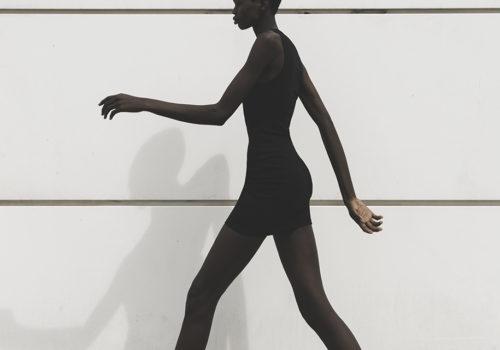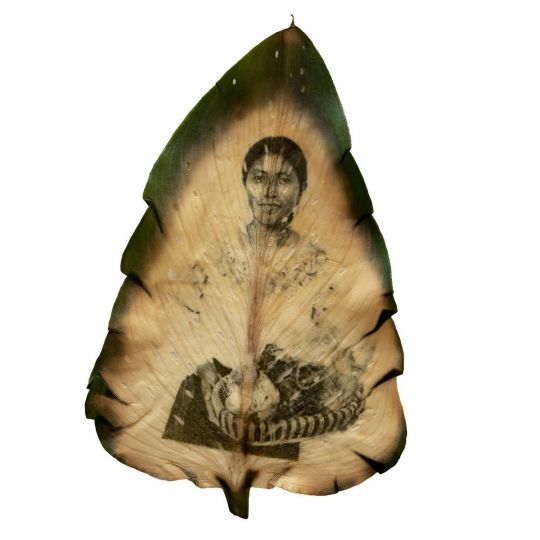Louis Teran : Searching for the imperceptible.
Born in Paris in 1981 and a music fan, Louis Teran left for London when he graduated from high school. After a while, he returned to France, living off odd jobs. The question of his future arose, and it was while recalling images from the film “Fallen Angels” by Wong Kar-Wai that something clicked. He did his first internship with Jean-François Aloïsi to learn the basics of the trade. He then became Jean-Baptiste Mondino’s assistant. He observed, immersed himself and learned to go straight to the point. Louis Teran has found his calling.
Today, as an artist in his own right, Louis Teran loves the art of portraiture. Whether famous or not, his characters are treated in the same way. He subjects them to the truth serum of his lens, detects their cracks and gives them a frank look.
As a photographer, he delights in tracking down the singular. A bit of a voyeur, very observant, he looks for that je ne sais quoi in everyone, imperceptible to the naked eye. He deciphers silences and the unspoken to bring his truth to light with complete transparency.
His shots are like exchanges in which both photographer and model give a little of themselves. While he claims to have no technique, it’s obvious that he knows how to handle light and compose his frame. His camera is simply the tool he uses to transpose his view of people into a new reality.
He doesn’t give his photos titles, preferring to give them an anonymous existence and let the viewer find what he or she wants, because for Louis Teran, the very act of photographing is not trivial, and trust with his model is paramount. It’s here that a game of seduction begins between photographer and subject, with the aim of becoming one and capturing “THE” moment.
If Louis Teran is first and foremost a black-and-white photographer, it’s above all thanks to his admiration for Alfred Stieglitz. He composes his photographs like film stills. He stages his models without stripping them of their living character.
Instagram: louisteran
Website: louisteran.net
Your first photographic breakthrough?
Louis Teran: Wong Kar Waï’s Fallen Angels. The importance of style.
The man or woman in the picture who inspires you?
Louis Teran: Federico Fellini.
The image you’d like to have made?
Louis Teran: Any picture by Sarah Moon.
The one that moved you the most?
Louis Teran: Recently, I came across a photo of Ana Magnani singing at the dinner table in Pasolini’s Mamma Roma. She’s so beautiful.
And the one that made you angry?
Louis Teran: None.
A key image in your personal pantheon?
Louis Teran: The Flatiron, by Alfred Stieglitz.
A photographic memory from your childhood?
Louis Teran: Images from Ron Howard’s Cocoon.
With no budget limit, what work of art would you dream of acquiring?
Louis Teran: Francis Bacon’s Two Figures, 1953.
In your opinion, what’s the one quality needed to be a good photographer?
Louis Teran: The manipulation of situations.
What, if any, is the secret of the perfect image?
Louis Teran: Folly, and everything else.
The person you would or would have liked to photograph?
Louis Teran: Orson Welles.
Which photographer would you like to have your portrait taken by?
Louis Teran: Edward Steichen.
An essential photo book?
Louis Teran: It’s always nice to have a Harry Gruyaert book at home!
Your childhood camera?
Louis Teran: A Kodak disposable.
The one you use today?
Louis Teran: The Canon R6.
Your favorite drug?
Louis Teran: Olive oil.
The best way to switch off?
Louis Teran: Getting drunk on good wine.
What is your personal relationship with images?
Louis Teran: It’s part of my language.
What’s your greatest quality?
Louis Teran: Loyalty.
An image to illustrate a new banknote?
Louis Teran: Elon Musk on Mars.
What job would you rather not have?
Louis Teran: Cow inseminator.
And if you hadn’t become a photographer?
Louis Teran: I’d have liked to be a painter or a footballer.
Your greatest professional extravagance?
Louis Teran: If I talk about it, I risk a heavy fine.
What do you think is the difference between photography and art photography?
Louis Teran: The former means nothing, the latter tries to say everything.
What city, country or culture do you dream of discovering?
Louis Teran: Palermo.
The place you never tire of?
Louis Teran: Sitting at a table and having lunch or dinner.
Your biggest regret?
Louis Teran: Not having prepared more seriously for the Beaux-Arts competition.
In terms of social networks, do you prefer Instagram, Facebook, Tik Tok or Snapchat, and why?
Louis Teran: Instagram, because Facebook looks like an Ehpad, Tik Tok looks like a supermarket, and Snapchat has lost all its initial charm. That said, Instagram has also lost its magic.
What have digital technology and smartphones taken away from or brought to photography?
Louis Teran: I’m one of those people who view new technologies with great enthusiasm. Photography, like cinema, is always ready to be challenged. You have to look at where photography started and imagine what a hassle it was to take a photo in its early days. You had to be an initiate. Today, anyone can take a usable photo with a smartphone, and even make a film! I think that’s great. The problem isn’t that anyone can take a photo, but that anyone is capable of taking a real photo. That’s where a lot of people go wrong, including professionals. It’s the look that counts, not the medium.
Color or B&W?
Louis Teran: Both.
Daylight or artificial light?
Louis Teran: Daylight.
Do you prefer film or digital?
Louis Teran: I think digital has become so much more magical than film over time. The possibilities of digital, and therefore of the digital adventure, are endless, and we haven’t seen anything yet. Recently, Midjourney and Adobe Firefly have revolutionized the way images are created. The same goes for cinema: soon, we’ll be able to make short films by writing a few lines of script, it’s crazy and exciting. Digital, then.
If God existed, would you ask him to pose for you, or would you opt for a selfie with him?
Louis Teran: I’d make him pose.
If I could organize your ideal dinner party, who would sit at the table?
Louis Teran: Francis Ford Coppola, Pier Paolo Pasolini, Federico Fellini, Marie-Antoine Carême, Francis Bacon. Now we’re talking.
Which image do you think represents the current state of the world?
Louis Teran: A picture whit the whole Kardashian family.
What’s missing in today’s world?
Louis Teran: People who feel good about themselves.
If you had to start all over again?
Louis Teran: I’d be a painter.
Any last words?
Louis Teran: Let’s have dinner!
















